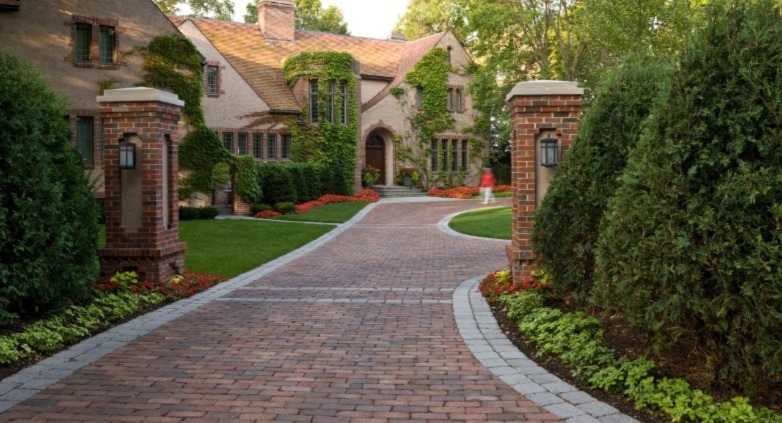Brick Driveway Edging – 8 Steps Installations, Pros, & Ideas
Brick driveway edging is a stylish yet functional addition to any home, effortlessly blending durability with curb appeal. It’s the perfect way to elevate your outdoor space.
Brick driveway edging involves lining the sides of a driveway with bricks to create a clear boundary and enhance aesthetic appeal. This method not only adds a touch of elegance but also helps to protect the driveway edges from crumbling or cracking, ensuring a longer lifespan for your pavement. It’s a practical choice for homeowners looking to improve their driveway’s durability and visual charm.
Discover how to transform your driveway with brick edging. Explore installation tips, design ideas, and the many benefits it offers to homeowners.
How to Install a Brick Driveway Edging in 8 Steps
Here are the steps to follow in order to accomplish the installation of a brick driveway edging successfully.
1. Assessing Your Space
Begin your brick driveway edging project by accurately assessing the area you plan to enhance. Measure the length and width where you’ll install the edging, paying attention to the driveway’s existing contours and any nearby landscaping that might affect your layout. This initial step is vital for visualizing the project’s end result and calculating the required materials.
2. Choosing Your Brick Style
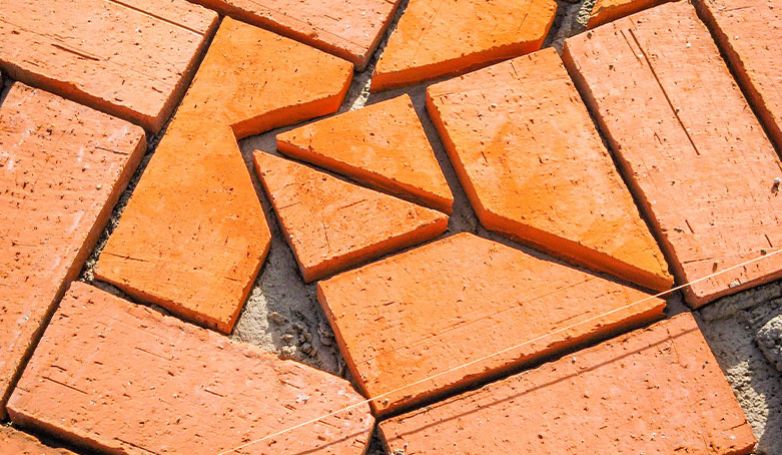
Choosing the right brick style is crucial for aligning with your home’s aesthetics and landscape. From classic reds to modern grays and textures ranging from smooth to rustic, options abound. Consider whether solid bricks or pavers fit your vision and budget. The ideal selection will not only beautify your driveway but also elevate your property’s overall charm and resilience.
3. Gathering Necessary Tools and Materials
Before you start, ensure you have all required tools and materials. This includes a shovel, rubber mallet, level, and trowel for the installation process. You’ll also need bricks, landscape fabric to inhibit weeds, plus sand or gravel for the foundation. Collecting these items beforehand streamlines your workflow, making the installation smoother and more efficient.
4. Marking the Edging Area
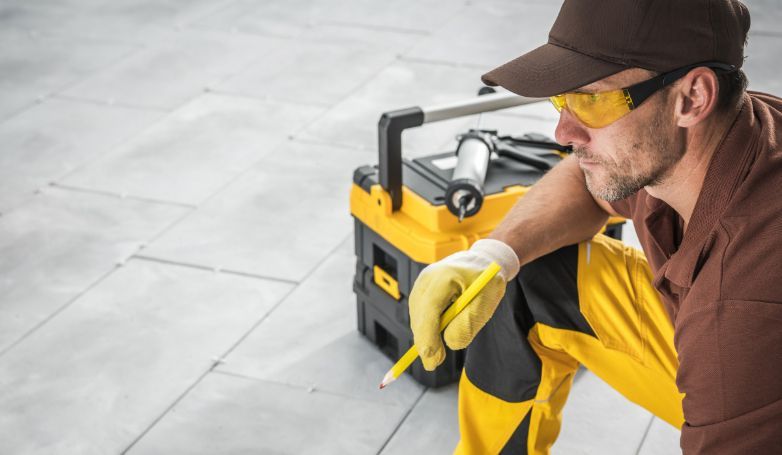
Accurately marking the area where your brick edging will go is essential for achieving a precise and professional-looking outcome. Use stakes and string to outline the perimeter of your driveway where the bricks will be laid. This step helps visualize the final look and ensures your edging follows the desired path and shape. A measuring tape can assist in keeping the lines straight or perfectly curved, as planned.
5. Excavating the Edging Path
Carefully excavate the outlined area for your brick edging, digging to the required depth. This step creates the foundation for your bricks, ensuring they sit securely and at the correct height. Removing grass, roots, and debris during excavation prepares a clean, stable base, crucial for the longevity and appearance of your edging.
6. Laying the Foundation
After excavating, prepare the foundation by laying down a layer of sand or gravel. This base aids drainage and provides a stable platform for the bricks, preventing shifting and settling. Compacting this layer ensures a level surface, essential for the uniform appearance and structural integrity of your brick edging.
7. Placing and Securing Bricks
Begin placing your bricks tightly along the prepared trench, following your design. Use a rubber mallet to gently tap each brick into place, ensuring they’re level and securely nestled against one another. This careful placement forms a durable, attractive edge that defines your driveway, with each brick contributing to the overall stability and aesthetic of the project.
8. Finishing Touches and Cleanup
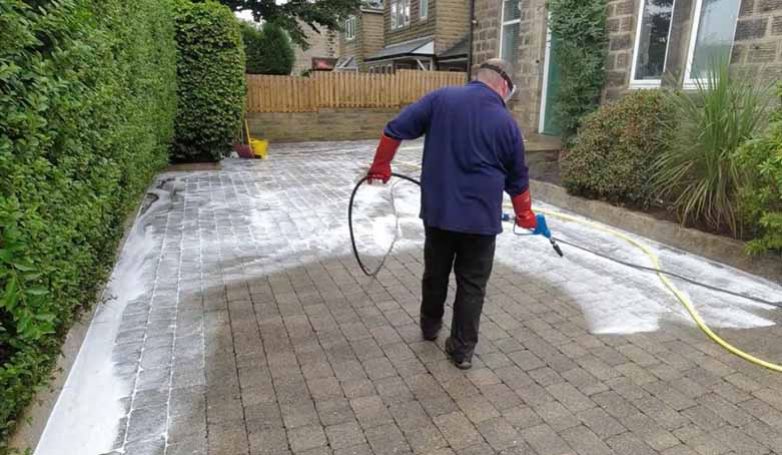
After laying the bricks, sweep sand over them to fill any gaps, ensuring a snug fit and locking them in place. Rinse the area to remove excess sand and debris, revealing the edging’s beauty. This final step not only secures the bricks but also enhances their appearance, completing your project with a clean, polished look..
By following these steps, you can significantly enhance your driveway’s appeal and functionality. This comprehensive approach, from initial space assessment to the final cleanup, guarantees a polished and enduring brick edging that beautifully complements your property.
Benefits of Brick Driveway Edging
Brick driveway edging not only defines the boundaries of your driveway but also brings with it a multitude of benefits. From enhancing your property’s visual charm to guaranteeing your driveway’s durability and utility, choosing brick edging yields significant benefits over time, offering rewards immediately and years down the line.. Let’s explore the key advantages.
Enhanced Curb Appeal
Incorporating brick edging around your driveway elevates your property’s aesthetic appeal significantly. The classic and versatile nature of brick can complement any home’s exterior, adding a layer of sophistication that catches the eye of passersby. This simple addition can transform the front of your home, setting a tone of elegance and well-maintained beauty that enhances the neighborhood’s charm.
Improved Driveway Durability
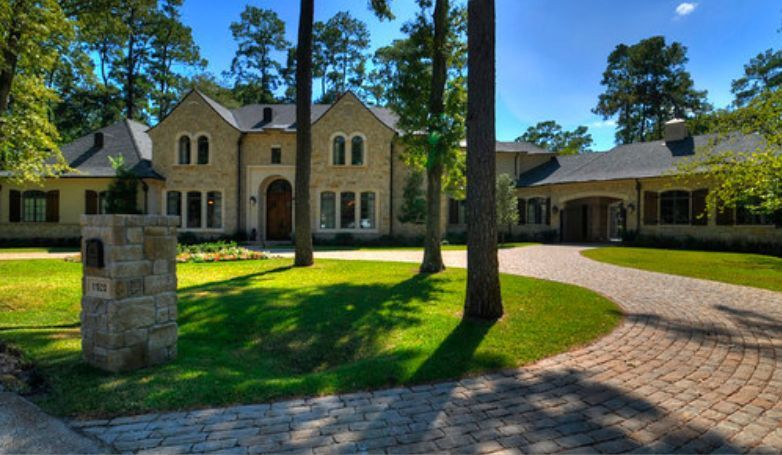
Brick edging serves more than an aesthetic purpose; it strengthens the driveway’s perimeter, protecting against edge wear, cracks, and structural breakdown. This robust barrier ensures the main driveway material, be it asphalt or concrete, remains compact and less prone to erosion or damage from vehicle traffic. The long-term stability this provides helps in preserving the driveway’s integrity and appearance.
Low Maintenance Requirements
The durability of brick as an edging material translates into lower maintenance efforts for homeowners. Unlike softer landscaping elements that require frequent care, brick stands up to the elements and time with minimal upkeep. Occasional sweeping and washing are typically all that’s needed to keep the brick edging looking pristine, making it an ideal choice for both busy and budget-conscious homeowners.
Increased Property Value
Adding brick driveway edging is an investment that pays off by boosting your property’s market appeal and value. The visual appeal, coupled with the practical benefits of durability and low maintenance, makes your home more attractive to potential buyers. This curb appeal enhancement can be a decisive factor in real estate transactions, offering a return on investment through improved property valuation.
By addressing each of these aspects, brick driveway edging proves to be a beneficial choice for homeowners looking to enhance their property’s curb appeal, durability, maintenance, and value.
Types of Brick Edging
From traditional solid bricks to versatile brick pavers and interlocking designs, each option offers unique benefits. Let’s explore the characteristics of different brick edging types to help you make an informed decision for your project.
Solid Brick versus Brick Pavers
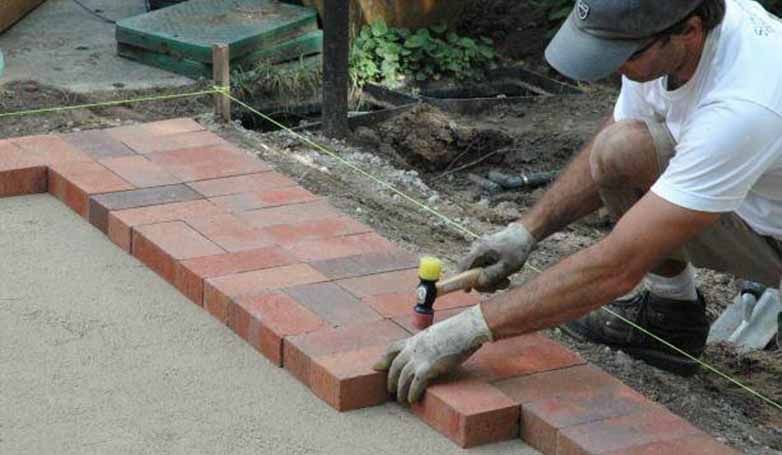
Solid bricks offer a classic, timeless look with their uniform shape and size, ideal for traditional garden paths and driveway edges. Brick pavers, thinner and often more varied in color and texture, provide flexibility in design, allowing for intricate patterns and custom layouts.
Interlocking Bricks for Stability
Interlocking bricks are designed with grooves that fit together snugly, creating a stable, cohesive structure. This type of edging is particularly useful in areas that experience heavy rain or foot traffic, as the interlocking mechanism helps prevent shifting and separation.
Color and Texture Variations
One of the joys of choosing brick edging is exploring the wide range of colors and textures available. From rich, earthy reds to cool, contemporary grays, and from smooth finishes to rugged, natural textures, the options are nearly endless. This variety allows homeowners to perfectly match or contrast their edging with the existing landscape and architectural elements.
10 Brick Driveway Edging Ideas and Examples
Brick driveway edging can transform a simple driveway into a standout feature of your home’s exterior. With a variety of styles and techniques available, you can easily customize the look to match your home’s aesthetic and landscape design. Here are ten creative brick-edging ideas to inspire your next outdoor project.
1. Classic Red Brick Lining
Classic red brick lining is a timeless choice that brings traditional elegance to any driveway. Its consistent color and texture offer a sense of harmony and order, beautifully complementing homes of all styles.
2. Herringbone Pattern Edging
For a touch of sophistication, consider a herringbone pattern. This arrangement adds a dynamic visual interest and texture, making your driveway border both functional and decorative.
3. Interlocking Brick Border
Opt for interlocking bricks for enhanced stability and a seamless look. This edging style is perfect for areas prone to erosion or heavy rainfall, as the interlocking design firmly holds the bricks in place.
4. Contrasting Color Accents
Incorporate bricks in contrasting colors to create visual accents along your driveway. This can highlight the driveway’s shape and make the entrance to your home even more inviting.
5. Raised Brick Edging
A raised brick edge not only defines the driveway boundary but also helps contain gravel or asphalt. It adds dimension and can prevent soil or mulch from spilling onto the driveway.
6. Glow-in-the-Dark Brick Edging
For functionality and flair, glow-in-the-dark brick edging illuminates your driveway at night, enhancing safety and adding a unique aesthetic touch to your landscape after sunset.
7. Brick and Plant Combo
Pairing bricks with low-growing plants or ground cover introduces a natural element to the edging. This combination softens the hard lines of the driveway and adds a burst of color and texture.
8. Antique Brick Charm
Use antique or reclaimed bricks for a rustic, weathered look that has character and history. This option adds a vintage charm to your driveway, making it stand out.
9. Brick Mosaic Edging
Get creative with a brick mosaic, arranging bricks of various colors or shapes into unique patterns. This artistic approach can turn your driveway edging into a work of art.
10. Serpentine Brick Edge
For a more whimsical or organic look, a serpentine brick edge with its curves and waves can add movement to your driveway’s border, offering a softer alternative to straight lines.
Each of these ideas offers a unique way to enhance the edges of your driveway with bricks, proving that functionality and beauty can go hand in hand in landscape design.
Comparing Materials for Driveway Edging
Choosing the right material for your driveway edging can significantly impact the overall look and functionality of your landscape. From the durability of concrete to the natural aesthetics of gravel and the cost-effectiveness of asphalt, each material offers unique benefits. Here’s how these materials compare when used in conjunction with brick edging.
Concrete Driveway Brick Edging: Durable and Versatile
Concrete offers unmatched durability, making it an ideal choice for supporting brick edging. Its versatility in color and texture complements the brick, providing a cohesive look that can withstand the test of time and heavy traffic.
Gravel Driveway Brick Edging: Affordable and Natural
Pairing brick edging with a gravel driveway creates a charming, rustic appeal. This combination is not only affordable but also offers excellent drainage, reducing the risk of water damage to the bricks. The contrast between the structured bricks and loose gravel adds a pleasing texture variation.
Asphalt Driveway Brick Edging: Smooth and Cost-Effective
Asphalt, known for its smooth finish and cost-effectiveness, pairs well with brick edging to define driveway boundaries clearly. The dark color of asphalt highlights the brickwork, creating a striking visual boundary that is both practical and aesthetically pleasing. This combination also offers a smooth transition from the driveway to the surrounding landscape.
Brick Driveway Edging Design Considerations
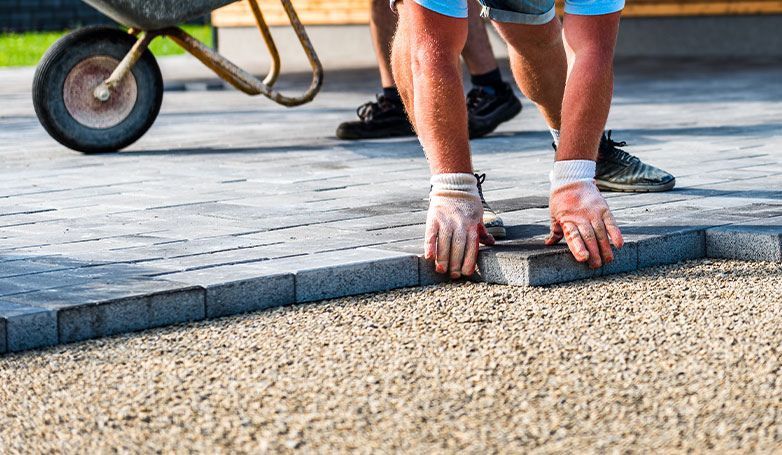
Designing brick driveway edging involves more than just laying bricks along the driveway’s edge. It requires thoughtful consideration of how the edging will complement your home’s exterior, integrate with the landscape, and serve its intended purpose. Whether you aim for functionality, aesthetics, or both, here are key factors to keep in mind.
Matching Bricks with Your Home’s Exterior
Selecting bricks that harmonize with your home’s facade ensures a cohesive look. Consider color, texture, and size when choosing bricks, aiming for a seamless blend that accentuates your home’s architectural style.
Selecting the Right Pattern
The brick pattern can significantly impact the overall appearance of your driveway edging. From traditional running bond to more intricate herringbone or basketweave, the right pattern can add visual interest and enhance the driveway’s aesthetic appeal.
Integrating with Existing Landscaping
Your brick edging should complement, not clash with, your existing landscaping. Consider the colors and textures of your garden beds, lawns, and other landscape features. The goal is to create a harmonious balance that ties the entire outdoor space together.
Functional vs. Decorative Edging
Decide on the primary purpose of your brick edging. If it’s functional, focus on durability and stability to protect the driveway edges. For decorative edging, you might prioritize color, pattern, and design to enhance curb appeal. Many homeowners opt for a combination, seeking both practicality and beauty in their design.
Brick Driveway Edging Cost
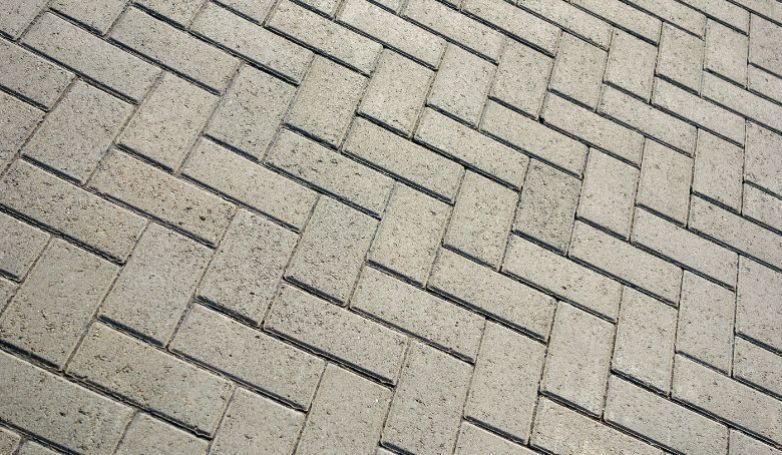
The expense can vary widely depending on the choice of materials, whether you opt for professional installation or take on the project yourself, and the scale of your design. Here’s a breakdown of the main cost factors involved in adding brick edging to your driveway.
Estimating Material Costs
The price of bricks can fluctuate based on type, color, and quality. High-end, designer bricks will cost more than standard ones. Additionally, consider the cost of supplementary materials like sand, gravel, or concrete for the base, as well as any required sealants or finishes.
Labor Costs for Professional Installation
Hiring professionals to install your brick driveway edging can significantly impact your budget. Labor costs vary by region and contractor but paying for expertise can ensure the job is done right the first time, potentially saving you money on future repairs.
DIY vs. Professional Installation Cost Comparison
Tackling the installation yourself can save on labor costs, making the project more affordable. However, it’s important to weigh the potential savings against the risk of mistakes that could result in higher costs down the line. Consider your own skills and the complexity of your design before deciding between DIY and professional installation.
Brick Driveway Edging Maintenance Tips
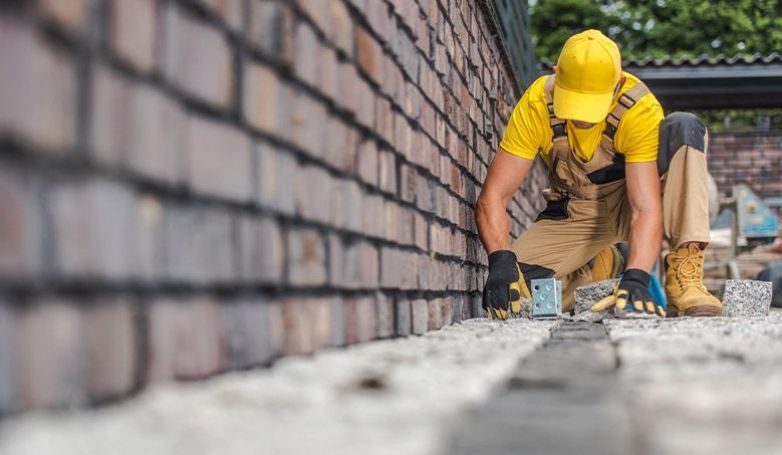
Proper care involves routine cleaning, timely repairs, seasonal maintenance, and effective weed prevention strategies. Let’s delve into essential maintenance tips to keep your brick edging looking its best year-round.
Routine Cleaning Practices
Regular cleaning is key to preserving the aesthetic appeal of brick driveway edging. Delicately remove any debris and wash with water to avoid the accumulation of dirt. For stubborn stains, a mild detergent solution can be used, followed by a thorough rinsing.
Repairing Loose or Damaged Bricks
Inspect your edging regularly for any loose or damaged bricks and address these issues promptly to maintain structural integrity. Replacing or resetting bricks can often be a straightforward DIY task, ensuring the edging remains stable and attractive.
Seasonal Maintenance Considerations
Adapt your maintenance routine to the changing seasons. Prepare for winter by checking for proper drainage to prevent water from pooling and freezing, which could lead to damage. In spring, assess any winter wear and perform necessary repairs.
Preventing Weed Growth
Weeds can quickly mar the appearance of brick driveway edging. To deter weed growth, consider applying a pre-emergent herbicide or using landscaping fabric beneath the bricks. Regularly removing any emerging weeds will also help keep your edging looking neat and well-kept.
FAQs about Brick Driveway Edging
Here, you’ll find the answers to the questions that are asked most frequently.
What is the best edging for a driveway?
The best edging for a driveway combines durability, aesthetic appeal, and compatibility with the driveway material. Brick and stone are popular for their longevity and visual appeal, while metal and plastic offer cost-effective, durable solutions.
What is the cheapest way to edge a driveway?
The cheapest way to edge a driveway is using materials like plastic or metal edging, which are both affordable and easy to install. Alternatively, repurposed or recycled materials can also serve as economical edging options.
What do you put under brick edging?
Under brick edging, it’s common to use a layer of landscape fabric covered by a base of crushed stone or sand. This foundation aids drainage and stability, preventing the bricks from shifting over time.
What do you put between bricks on a driveway?
Between bricks on a driveway, polymeric sand is often used. It hardens after application, locking the bricks in place, deterring weeds, and preventing ant infestation. It also offers flexibility, accommodating slight movements without cracking.
Conclusion
Incorporating brick edging into your driveway design not only elevates the aesthetic appeal of your home’s exterior but also enhances the functionality and longevity of your driveway. By selecting the right materials, adhering to proper installation techniques, and committing to regular maintenance, homeowners can ensure their driveway remains a beautiful and durable feature for years to come. Whether opting for a DIY approach or enlisting professional help, brick driveway edging is a worthwhile investment that adds charm and value to any property.

